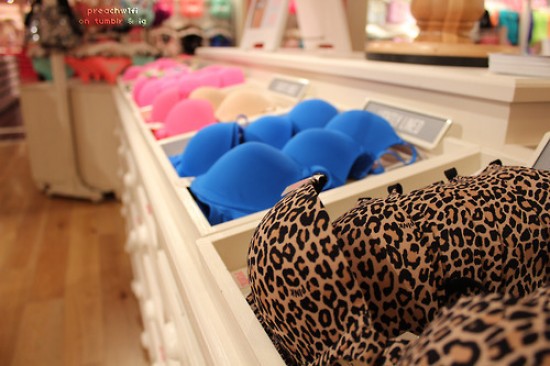Let’s be honest: hair extensions have been a game-changer in how we wear our hair.
They’ve made it easy to seamlessly switch from shoulder-length hair to luscious locks that cascade down your back. You can even achieve celeb-worthy bangs in a matter of minutes, without the commitment. Thanks to hair extensions, it’s possible to finally have that full ponytail you’ve been dreaming of (just put it on in the morning and take it off at night).

But which hair extensions are right for you? This can be a tough question to answer, especially when you’re bombarded with hair extensions ads as you scroll through social media. They all make promises of hassle-free application and Rapunzel-like results. But we’ve all seen photos of online shopping fails where reality turned out to be quite different from what was expected.
To help you out, let’s first look at the different types of hair extensions.
What Types of Hair Extensions Can You Get?

Hair extensions come in three main categories: temporary, semi-permanent, and permanent.
Temporary Hair Extensions
These extensions can be installed and taken out each day or week and do not usually need a professional to install them. There are two main types.
Clip in extensions are placed close to your roots using small comb-like clips that are attached to wefts of hair. It only takes a matter of minutes to clip in them in, and removing them is just as easy.
Halo hair extensions are considered to be the least invasive because they don’t physically attach to your hair. They are made up of a thin, nylon wire and a weft of hair. The wire sits around the crown of your head (just like a halo) and is covered by your natural hair.Semi-Permanent Hair Extensions
These types of extensions can be worn for 4 to 8 weeks and need to be installed by a professional. There are two types.
Sew-ins are installed by first braiding natural hair into a cornrow that goes from ear to ear. The weft extension is then sewn into the cornrow.
Tape in Extensions are extensions where the hair is attached to adhesive strips (tapes). During installation, the strip cover is peeled off to reveal the tape. A section of natural hair is then placed between two pieces of the extension (like a sandwich).
Permanent Hair Extensions
Installing permanent extensions is a time-consuming process, but they can last up to 4 months (with maintenance appointments in between).
Micro rings have pieces of hair attached to a tiny ring. Small sections of natural hair are then looped through the ring, and the extension is clamped in place close to the roots.
Keratin bond extensions have a keratin tip which is bonded to sections of natural hair and hardens to about the size of a grain of rice. Because the individual extensions are small in size, they blend well and have a natural look.
Are Hair Extensions Bad For Your Hair?
You’ve probably heard of or read stories of people who have ended up with bald patches or experienced a lot of hair breakage which they attributed to extensions. As a result, hair extensions have gotten a bad reputation.
However, suppose you use high-quality extensions, have them correctly installed by a professional, maintain and care for them as advised, and take them out within the recommended timeframe. In that case, hair extensions should not cause damage to your strands.

How To Sleep With Hair Extensions
So you’ve picked hair extensions that best suit your needs and they’ve been installed by a professional (if you’ve gone the semi-permanent or permanent route). You’re ready to turn in for the night. Do you jump into bed?
The short answer is no, unless you want a hot, tangled mess in the morning. Here’s a nighttime routine that can help you avoid damaging your natural hair and prolong the lifespan of your extensions.

1. Remove your temporary extensions. Clip-ins and halo extensions are not made for sleeping. Apart from potential matting of the hair, tossing and turning can cause the clips to break or the halo wire to break.
2. If it’s wet, dry it. It’s not a good idea to sleep with damp extensions (or your natural hair, for that matter). Hair is fragile when wet, making it more prone to breakage. If you don’t have the time or patience to let your hair air dry, use the medium heat setting on your blowdryer to dry the hair. Start at the roots and work your way down to the ends.
3. Check your roots for tangles. If you have semi-permanent or permanent extensions, inspect your extension bonds to see if there are any tangles or knots that may be causing needless strain on your strands. Use your fingers to detangle your hair gently.

4. Brush, brush, brush. Whether you have temporary or permanent extensions, brushing them regularly is a must, especially at the end of each day. Use an extensions brush because the bristles are designed to detangle while effortlessly gliding through the hair. Brush the ends first and slowly go up to the roots.
5. Moisturize lightly when necessary. Regularly moisturizing your extensions is essential as they can get frizzy and dry pretty quickly, making it easier for strands to break. If your extensions are starting to look dull, apply a few drops of a lightweight oil like argan oil to help moisturize and smooth the hair strands.
6. Secure the hair. Securing your hair for the night helps to prevent unnecessary matting and tangles. Putting your hair in loose pigtails or a loose braid will leave you with a soft wave in the morning once you brush out your hair. You can also put your hair into a loose ponytail or wrap it. Use scrunchies or ribbon hair ties instead of elastic ties.

7. A bonnet or scarf is your friend. Tying a scarf or wearing a bonnet to bed keeps your extensions from moving around while you sleep. Go for silk or satin ones because the material helps to reduce friction and consequently hair damage.
8. Consider a satin or silk pillowcase. Sleeping on a satin or silk pillowcase means you’re less likely to wake up with tangles and frizzy hair. Plus they can be beneficial for your skin!
Hair Extensions: Insider Tips & Tricks
1. When taking a break from extensions, wash them and let them dry thoroughly before storing them, preferably in their original packaging or in a storage bag meant for extensions.
2. Don’t be quick to buy the hair you see celebrities and influencers post about. Genuine referrals are the way to go. Consult your hairstylist and discuss the extensions you’re interested in. Let them advise you on whether the hair sheds, if it dyes well, etc.
3. If you want to get multiple uses out of your hair extensions, be diligent with your care and maintenance. That means regular washing, moisturizing, and minimal use of heat.
4. Don’t keep your extensions in longer than your stylist recommends; otherwise, you risk damaging your natural hair.
5. The amount of hair extensions you should install should be guided by your natural hair density. A rough guide to determine this is by considering how long it takes to dry your hair using a blow dryer. Fine hair can take two to four minutes, while thick hair can take longer than 10 minutes. Fewer hair extensions are needed for those with fine hair than those with thick hair.
6. When choosing hair extensions, think about how often you plan on wearing them. If you want length and volume every now and then, go for temporary hair extensions. On the other hand, if you are ready to commit to a longer, fuller look daily, invest in semi-permanent or permanent extensions.
Bio: Emily Weber works with the popular Swiss hair extension brand, Rubin Extensions. She’s previously worked as a freelance writer in all things beauty, hair and fashion. In her downtime, she loves to travel, bake and the occasional Pilates workout to balance it all out.



